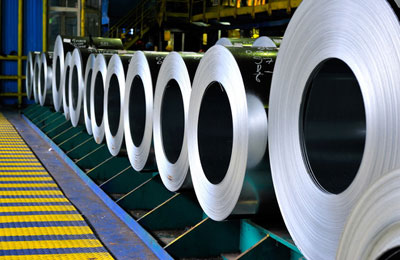
Global factory growth stumbles as demand falters
London/Beijing, March 3, 2014
Manufacturers across Europe and Asia changed down a gear last month as falling demand from abroad hurt Chinese output and European factory growth dipped from January's 2-1/2 year high.
But while the surveys across Asia were more downbeat, data from the euro zone showed output rose in all of the bloc's four biggest economies for the first time in almost three years.
"They are all building up to a picture which says it's going to be okay but nothing particularly stellar. They are not helping the case for a decent pick-up in the first half of the year," said Peter Dixon at Commerzbank.
Markit's final Eurozone Manufacturing Purchasing Managers' Index (PMI) came in at 53.2 last month, up from a flash reading of 53.0 but below January's 54.0 - which was the highest since May 2011. A reading above 50 indicates growth in activity.
The index measuring manufacturing output, which feeds into a composite PMI that is seen as a good gauge of growth, dipped from January's 33-month high.
"(This) reinforces suspicion that it is going to be far from plain sailing for the euro zone in 2014," said Howard Archer at IHS Global Insight.
"While the euro zone may be establishing modest growth, it is still finding it hard to build up momentum."
Gross domestic product across the region expanded 0.3 percent in the final three months of last year, thanks to stronger expansion in France and Germany, and is expected to match that pace each quarter this year.
To meet demand, firms increased headcount for the second month. But worryingly for the European Central Bank, which meets this week to set policy, inflation pressures subsided again.
Average input costs declined for the first time in six months and although factories were able to raise their prices slightly, they barely brought them up from January, possibly stoking fears of deflation in the region.
In one bright spot, British manufacturing grew quicker than expected, adding to signs that the country's economic recovery is broadening out. Job creation in the sector hit a 33-month high.
Similarly U.S. data - due later on Monday - is forecast to show a sliver of improvement in manufacturing, although much focus will be on new order growth, which slumped in January - the most in more than three decades.
FRAGILE CHINA
The HSBC/Markit PMI on China manufacturing fell to 48.5, a seven-month low and the third straight monthly decline in the index. A government PMI on Saturday had suggested the slowest growth in eight months.
"The Chinese numbers were a little disappointing compared to what we have seen in recent months," said Commerzbank's Dixon.
Although Chinese factories were struggling to expand as export orders fell, services firms regained some momentum. China's official non-manufacturing PMI rose to a three-month high.
"If the services PMI is to be believed, the service sector is not doing so bad, but ... the manufacturing, or the investment-heavy sector, not as well," said Wei Yao, China economist at Societe Generale in Hong Kong.
In recent weeks, other Chinese indicators have also been mixed. Weak investment and declining PMIs have been countered by surprisingly buoyant exports and bank lending figures.
Parliament's annual session is due to start on Wednesday and will provide the next marker for financial markets on the outlook for the world's second-biggest economy.
Premier Li Keqiang is widely expected to say the government will maintain the 2013 growth target of 7.5 percent in 2014.
Although the pace of expansion has slowed sharply from the breakneck double-digit pace of the last three decades, analysts at BofAML said that growth rate was achievable this year.
"We don't think policymakers will attach a big weight to the PMI readings in January and February," they said in a client note. "We think the government has enough policy room to achieve 7.5 percent GDP growth this year."
An HSBC/Markit PMI on South Korea fell below 50 for the first time in five months but Japanese manufacturers are still growing strongly, aided by the aggressive economic stimulus policies promoted by Prime Minister Shinzo Abe.
In India, whose economy is less reliant on exports, the PMI rose to its highest level in a year. – Reuters







